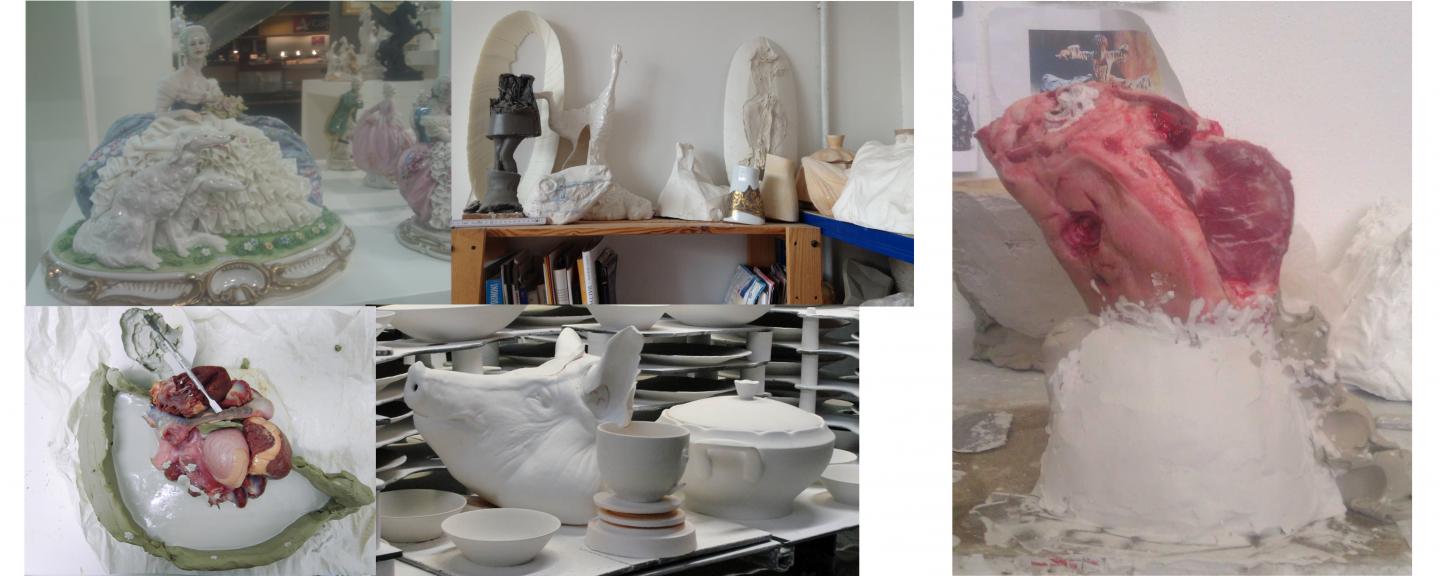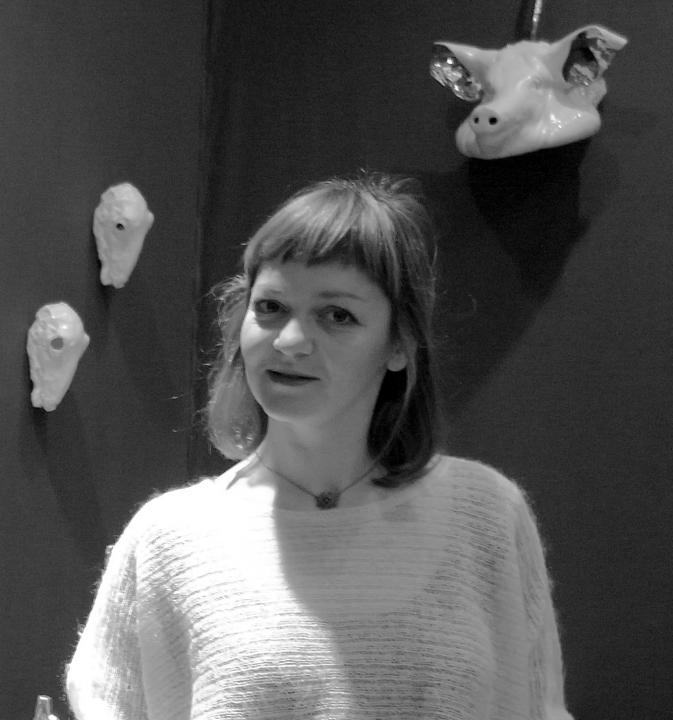
About
Maria Volokhova’s porcelain vessels offer uncanny three-dimensional portrayals of the inner and outer topographies of human and non-human animals. Throughout the past decade, Volokhova produced a series of experimental works that pushed the boundaries between art and design, between perceptions of the inside and the outside, and between understandings of the beautiful and the beastly. Her work is wide-ranging (e.g. pearly vessels molded from the inside of a monkfish, teapots in the shape of human intestines, a table set with animal-shaped vessels in the style of a still life painting) and methodologically innovative (e.g. collaborations with digital artists, new glazing techniques, experimental forms). Volokhova’s work invites us to contemplate the simultaneous fragility and resilience of bodies as well as question the pervasiveness of the consumer culture that structures and commodifies our relationship with other human and non-human beings.
Text: Rebecca Dologoy
Following my interest in and the observations of people, my art attempts to find the origins of and fundamental reasons for human activities. My art works with psychological analysis while expressing the inner physiology of the body. At the same time, as an artist I always research new ways of communicating/playing a game with the recipient.
My work does not seek to answer or decipher cultural phenomena. It is my intention to help the viewer problematize their own quotidian, in order to facilitate the distancing from the familiar, which is the space in which critical thinking and questioning takes place. My work gives neither answers nor specific critique to society. Rather my works poses questions and tries to establish
a dialogue between the installations and the viewer. It is this dialogues propels my research.
The choice of media is directed by artistic thinking: game with the viewer. Over the past couple of years I’ve tried out different ways of facilitating communication, like detached neutral interpretation, shock, breaking / showing things, which we constitute
as a taboo, and finally just to bring a recipient into a situation of inner insecurity and confusion.
Though originally interested and trained in printmaking, I decided to study china-making to be able to express the fragility of inner organs both in the visual and tactile dimensions.
"When the artist Maria Volokhova said to me that she is "interested in the inner world of a human being",
I’ve got slightly suspicious: there were a smell of banality and a risk of shallow spiritualism in this common phrase. After five minutes of conversation Volokhova’s interest in "human’s inner world" turned to be her artistic research of brain-nerves design, stomach’s volume, blood circulation system’s patterns and adipose tissues transparent qualities.
Thus, it became clear that Volokhova understands "Inner World" in a very direct sense and for me literal perception of roundabout phrases is one of the sign of radical artists (as well as of stubborn children and straightforward punks):
they don’t understand why "A reach man’s joke is always funny" and see animal abuse in "hit two rabbits with one shot".
Direct approach to commonly “metaphorized” topics of human nature, paradoxically, makes presentation of spiritual values more indirect, as well as more revealing and interesting.
Volokhova’s sauce-boats in shape of fetus and ashtrays with nerve-knot design and fatty-pellicle-tactility undoubtedly raise topics of human body perception and aesthetics of “anatomical” uncanny.
The topological aspect of human body and its representation is the first that comes in mind when reflecting on the intestines-like-pot. First, this work sharpens pre-modern perception of “a body, which is a sack with a lot of smaller sacks inside of it”.
Intestines are the thing, which is inside (a body), but still have its own insides, what makes exteriorized intestines still act
as a container, a pot. From another hand, the persistent containing feature of intestines is in paradoxical union with their vast surface area (due to their function of absorbing nutrient substances from digested food). The container, the surface and the interlacing are all come in one here. Another peculiarity of this work is in its strong object-like nature. By serving tea with this pot one is holding “intestines/jejunum” in his/her hands. The thing that is supposed to be hidden and integral with the “whole body”
is here in my hands as something revealed, independent and brought to light.
In spite of the fact that Volokhova shapes a “kitchen utensils” she is not a craftsman, nor a designer. Being interested in printmaking originally, she decided to study china making to be able to express fragility of inner organs both in the visual and tactile dimensions. If porcelain in its basics is treated as something delicate, than it is suitable material to intensify fragility
of intestines. The choice of media was directed by artistic thinking: idea – first, media – second.
Lastly, the functionality of “Jejunum teapot” is not just rejected, but subverted. It is not an item for domestic use, but in the same time it is not a kind of art for distanced observation. Yes, the “Jejunum teapot” is for tea service, but not to satisfy your thirst.
It is to observe the miraculous transformations that can happen when tea, food as well as idea or memory pass through unseen “tubes” of teapot, intestines or human mind: changing its colors, smell and taste."
written by Rodion Trofimchenko
